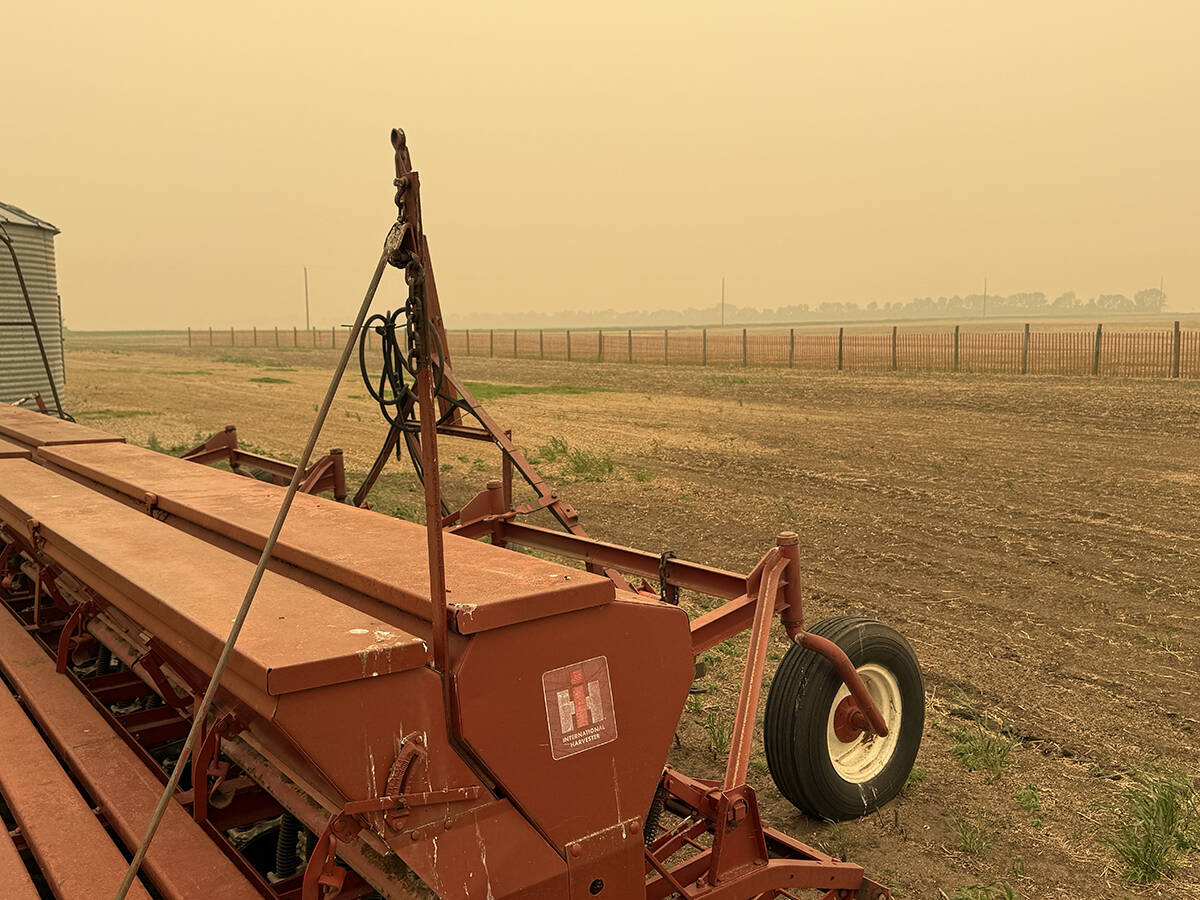Oat growers have caught a little bit of spring fever.
The winter doldrums have hit the market for old-crop oats, so growers are looking at what’s left in their bins and are pinning down prices for the crop they want to plant this spring, say analysts.
“For every two tonnes of new crop you’ll see one tonne of old crop trade,” said Randy Strychar of Statcom Ltd. in Vancouver.
Last week, western Canadian growers were getting average bids of $1.45 per bushel for old crop and $1.67 per bu. for new crop, according to Strychar.
Read Also

Wildfires have unexpected upside this year
One farmer feels smoke from nearby wildfires shrouded the July skies and protected his crop from the sun’s burning rays, resulting in more seeds per pod and more pods per plant.
Slow demand has flattened March oats futures trade in Chicago to a steady range between $1.46 to $1.50 (U.S.) per bushel, said Todd Busby, a cash grain broker with Mitcon Inc. in Calgary.
“The oats market is stagnant and the only thing that is going to push it right now … is weather,” said Busby.
About 90 percent of Canadian exports go to the United States, but the market to the south is flush with oats, he said.
“This year we’ve had a tremendous amount of Scandinavian oats move into the Gulf (of Mexico) ports, more than we’ve seen in quite a few years, and they’ve really taken the southern U.S. oat market away from the Canadian oat merchandiser.”
Bumper American crop
European Union subsidies have paved the way for 350,000 to 400,000 tonnes of oats from Finland and Sweden, said Duncan McKinnon, coarse grains analyst with Agriculture Canada. Scandinavian countries may still ship another 50,000 to 100,000 tonnes, said McKinnon. And U.S. growers harvested an unusually large crop of their own last year, he noted.
He said major U.S. buyers like Quaker Oats and General Mills have secured their supplies for the year.
“From what I’ve heard, they have all they need, perhaps even through to new crop.”
Farmers in Manitoba and Saskatchewan have moved 40 to 50 percent of their oats already, and have fed more of them to livestock than last year, said Strychar.
But Alberta farmers seem to be sitting on their oats, said Busby, even though they have some of the best prices in Western Canada.
He said mills around Edmonton are paying $2.10 to $2.15 per bu., compared to Saskatchewan elevator prices of $1.75 to $1.80 a bu.
“Why the farmer in Alberta isn’t selling is beyond me,” he said.
“We’ve got three oat processors in northern Alberta that are just struggling like there’s no tomorrow trying to buy oats.”
Busby expects Alberta farmers may switch some oat acres to barley, canola and Canada Prairie Spring wheats this spring. But he predicts farmers in Manitoba and eastern Saskatchewan will plant more oats.
“If you can get $2.20 a bushel for oats, f.o.b. your farm in Manitoba, and grow 80 bushels an acre, it’s not a bad return,” said Busby, adding some farmers can get 100 to 110 bushels per acre.
Feed oats have carried a premium to feed barley in Manitoba all crop year, said Strychar.
All told, he thinks Canadian farmers will harvest just over four million acres of oats this year, eight to 12 percent more acres than last summer.
While Canadian processors like Can-Oat Milling plan to buy more oats, Strychar said U.S. demand will play a far greater role in setting prices.
“When you look at what really drives the acreage in Canada, it’s the export market in the U.S.,” he said.














